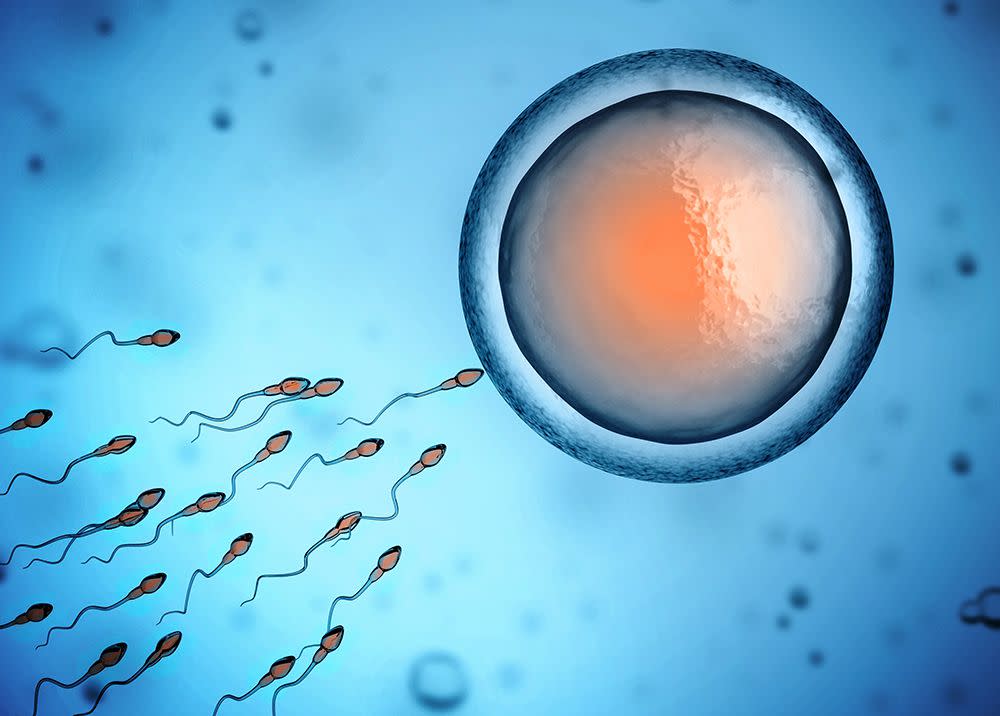Artificial Insemination: Side Effects, Risks, and Cost

Shutterstock
First developed in the 1700s, artificial insemination (AI) is the process of impregnating one without sexual intercourse. It can be conducted with donor sperm or chosen sperm. Partners, for example, may go to banks. This is common when there are fertility issues. However, there are numerous reasons why one may choose AI. Artificial insemination is also an option for those who are single and/or in same-sex relationships.
Here's everything you need to know about two of the most common methods of artificial insemination: intrauterine insemination (IUI) and intracervical insemination (ICI), from how each procedure is done to the overall costs.
What Is Artificial Insemination?
Artificial insemination is a fertility treatment which introduces sperm to the cervix or uterus. This is done directly, via intrauterine insemination (IUI) or intracervical insemination (ICI), and it is done with one goal in mind: to get pregnant.
How Does Artificial Insemination Work—and When Should It Be Scheduled?
Doctors schedule artificial insemination based on a person's menstrual cycle. AI has the best chance of success if correlated with ovulation, which happens when the ovary releases a mature egg about 14 days before the monthly period. For this reason, artificial insemination is only attempted once per cycle.
To determine if ovulation is occurring, doctor's use both blood and urine tests and at-home ovulation test kits. As for "how it works," there are two methods of artificial insemination. Read on to learn more about IUI and ICI.
Intrauterine insemination (IUI)
Couples often turn to intrauterine insemination (IUI) for male factor infertility, although it's also used to combat other unknown causes of infertility and endometriosis-induced infertility. Those with thick cervical mucus that prevents sperm from reaching an egg may also get IUI.
To begin the IUI process, the intended pregnant person will take medications to elevate fertility. Doctors will prepare a semen sample—either from the intended father or a donor—by separating the sperm from the seminal fluid, says Tanmoy Mukherjee, M.D., a board-certified gynecologist and reproductive endocrinologist who works as a co-director of Reproductive Medicine Associates of New York. That's because seminal fluid can cause intense uterine contractions.
Next, the doctor will mix the sperm with liquid, load it onto a catheter, and insert it inside of the vagina. When the catheter reaches the uterus, doctors will dispense the sperm inside. Dr. Mukherjee says the process resembles a Pap smear.
Since the sperm is inserted directly into the uterine cavity, it must travel less distance to reach the egg—and in turn, there's a higher chance of conception than with "normal" intercourse. Here are Dr. Mukherjee's estimates of IUI success rates, based off of one cycle:
8 to 10% success rate for male-factor infertility
5% success rate for tubal infertility
18 to 20% success rate for unexplained infertility
Intracervical insemination (ICI)
A simpler artificial insemination method, intracervical insemination (ICI) imitates natural intercourse. Unwashed, liquified semen (from either a donor or the intended father) is loaded into a syringe specially designed for ICI. It's then inserted inside of the vagina and slowly emptied near the cervix. The person who is trying to conceive should lie on her back during the procedure—and for half an hour afterwards. If all goes well, the sperm will travel to the fallopian tubes and form a pregnancy.
ICI can be conducted at home or a medical center. The success rate ranges from about 5% to 30% per cycle, and it may be more efficient if the person attempting to become pregnant places a sponge cap over the cervix for several hours afterwards. This will hold the semen in place. Washing the sperm may also increase effectiveness. Note that ICI is sometimes called Intravaginal insemination (IVI).
Are There Any Side Effects?
While the side effects vary from person-to-person—and procedure-to-procedure—some individuals will experience cramping. Light bleeding may also occur. That said, not everyone will experience residual effects. Some, for example, have no side effects.
What About Risks?
There are few risks associated with IUI and ICI; however, complications can arise. Some of the most common risks include:
Infection. There's a slight risk one could develop a pelvic infection as a result of artificial insemination.
Ovarian hyperstimulation syndrome. Ovarian hyperstimulation syndrome, or OHSS, is rare but can have serious complications.
Multiples pregnancy. While artificial insemination, in an of itself, does not increase one's risk of a multiple pregnancy, when combined with fertility medications, the risk of a multiple pregnancy increases.
How Much Does Artificial Insemination Cost?
Without insurance, intrauterine insemination costs about $300 to $1,000 per cycle. The price increases if using donor sperm, which costs about $700 to $1,000 per vial. Health insurance may cover some of the price, including extra expenses like blood work, ultrasounds, and medications.
On the other hand, intracervical insemination costs about $200 to $350 per cycle. Unwashed sperm contributes to the cheaper price tag, but you can use washed sperm for a premium. Donor sperm also raises the cost of ICI.
Given the relatively low success rates of IUI and ICI, couples probably need more than one cycle. After multiple failed attempts, they may try in vitro fertilization (IVF) to conceive a child. During IVF, sperm and eggs are mixed in a petri dish, then the embryo is placed directly into the uterus. This costs about $15,000 total, but it has a greater success rate than ICI and IUI (about 53.9% if the person is under 35 years old and uses their own fresh eggs).
Though this story addresses male and female fertility issues, Parents acknowledges that not all people with testes identify as men, and not all birthing people identify as women.

